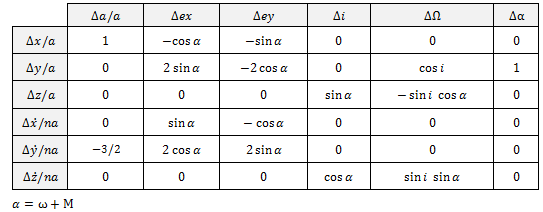Orbital elements types
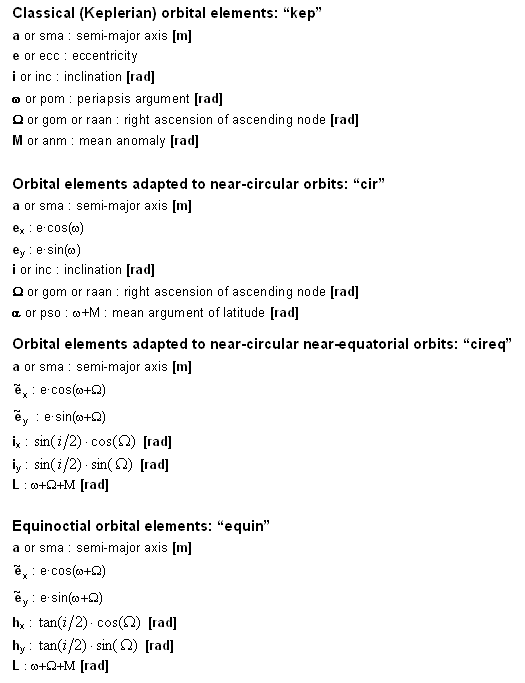
In addition, a "pv" type has been defined. It corresponds to "position and velocity" (in a (6xN) matrix).
Description of orbital elements

In addition, a "pv" type has been defined. It corresponds to "position and velocity" (in a (6xN) matrix).
Apart from position and velocity that can always be used, the suitable orbital element types are:
Elliptical orbits: "kep", "cir", "cireq" or "equin"
(preferably: "kep": for not near-circular and not near-equatorial orbits, "cir" for near-circular and not near-equatorial),
Hyperbolic orbits: "kep" only.
(Note that the semi major axis of a hyperbolic orbit is positive by convention.)
Parabolic orbits: none!
When converting to "kep" or "cir" types:
The thresholds used to determine if an orbit is near-circular, near-equatorial or near-parabolic are defined as constants - see "Data files" in CelestLab menu for values.
Gaps in orbital elements translate into gaps in position and (inertial) velocity in the local orbital frame.
Formulas giving the increments in position and (inertial) velocity as function of the increments in orbital elements for any elliptical orbit in the "qsw" local frame are the following:
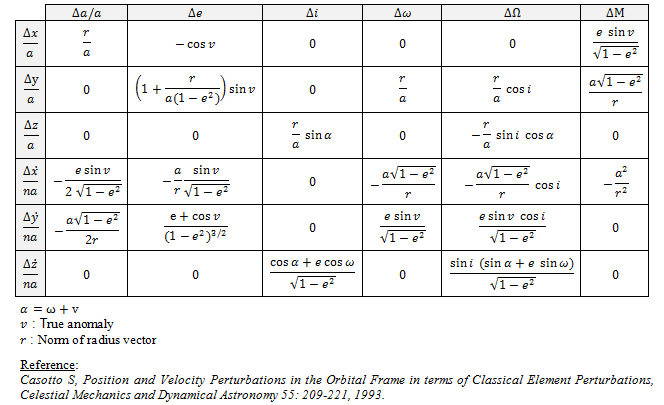
Simplified (order 0) expressions for nearly circular orbits are:
Keplerian elements, "qsw" local orbital frame:
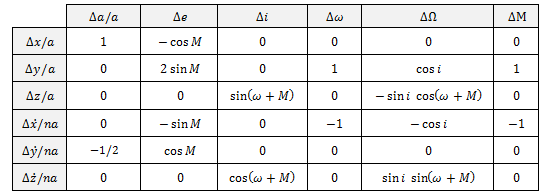
Keplerian elements, "tnw" local orbital frame:
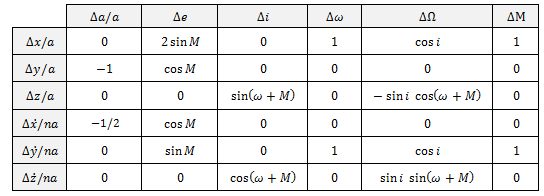
Circular elements, "qsw" local orbital frame:
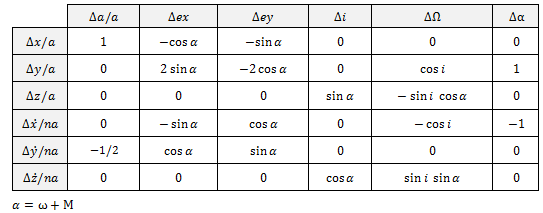
Circular elements, "tnw" local orbital frame:
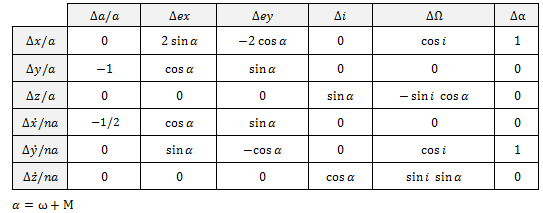
One can derive the jacobian matrix corresponding to a rotating local frame. The 1st order result for "qsw" and "circular" elements is the following:
Circular elements, "qsw" local orbital frame (velocity relative to local frame):
